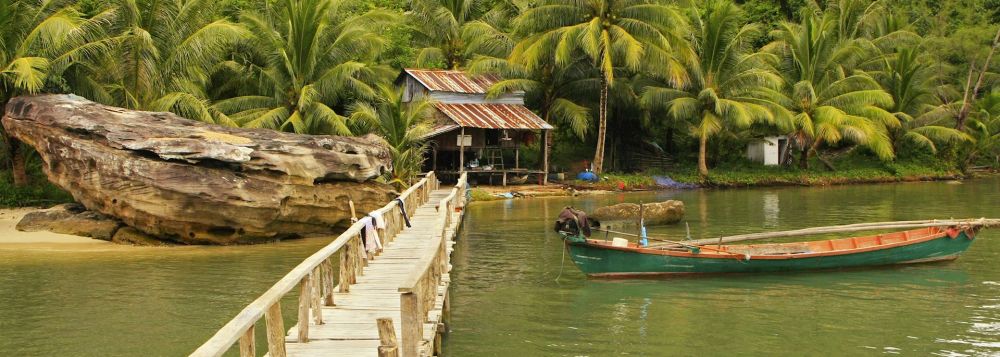

Ream National Park, situated approximately 18 kilometers from the city of Sihanoukville in Cambodia, is one of the country's coastal treasures. Established in 1993, the park covers 210 square kilometers, including mangrove forests, off-shore coral reefs, and a rich variety of wildlife. The aim of creating the park was not only to protect the unique ecosystems but also to develop sustainable eco-tourism that would benefit both the environment and the local communities.
Initially, tourism in Ream was minimal, with a focus primarily on conservation and restricted, low-impact activities. Visitors would come to experience the tranquility of the park's natural setting, its untouched beaches, and its biodiversity. Over the years, a few guesthouses and tour operations sprang up, offering guided treks, bird watching tours, and boat trips to the neighboring islands.
The late 1990s and early 2000s saw a significant increase in the number of tourists flocking to Sihanoukville, with some spillover into Ream National Park. The increase was due in part to Cambodia's overall stability and the government's efforts to promote tourism as a means of economic development. The infrastructure improved slowly, making the park more accessible to domestic and international tourists alike.
In the late 2000s, there was a concerted effort to promote eco-tourism in Ream as a way to preserve the park's natural beauty while providing economic opportunities to locals. This has led to the development of community-based tourism products, such as homestays and community-guided tours, which allow visitors to immerse themselves in the local culture and natural environment in a responsible manner.
Today, sustainable tourism remains a key focus in Ream National Park. With the increasing popularity of eco-friendly and responsible travel experiences, Ream is attracting visitors who are interested in participating in conservation initiatives, wildlife spotting, and exploring the diverse marine life through snorkeling and diving expeditions.
The rise of digital nomadism and remote work has also led to an increase in long-term visitors to areas like Sihanoukville and its surroundings, including Ream National Park. These tourists tend to seek out natural environments and low-impact tourism activities, further supporting the local eco-tourism model.
Moreover, the ongoing global health crisis has shifted the dynamics of travel and tourism, with more emphasis on outdoor and spacious locations that allow for social distancing — attributes that Ream National Park offers in abundance. As the world starts to travel more post-pandemic, destinations such as Ream that offer natural isolation, health benefits, and open-air experiences are expected to become more popular.
Challenges remain, though, especially in balancing development and conservation. As tourism continues to grow, pressure increases on the park's ecosystems and resources. There is an ongoing need for effective management and sustainable practices to ensure that Ream National Park remains a pristine destination for future generations.